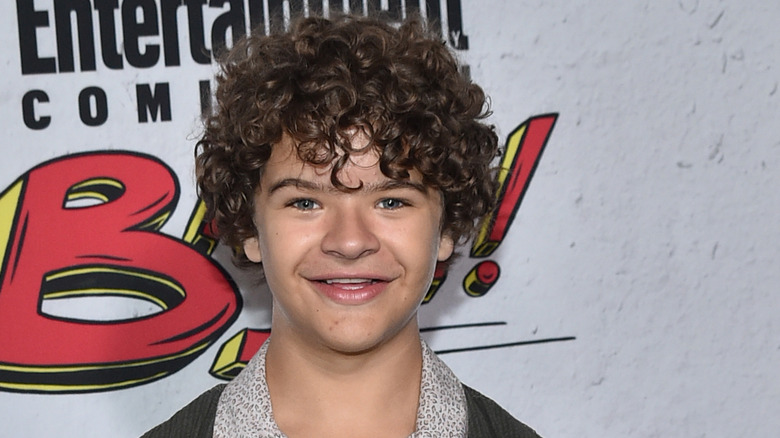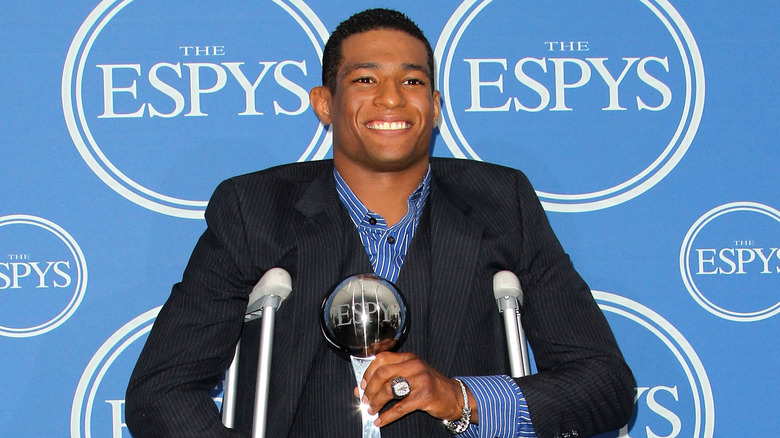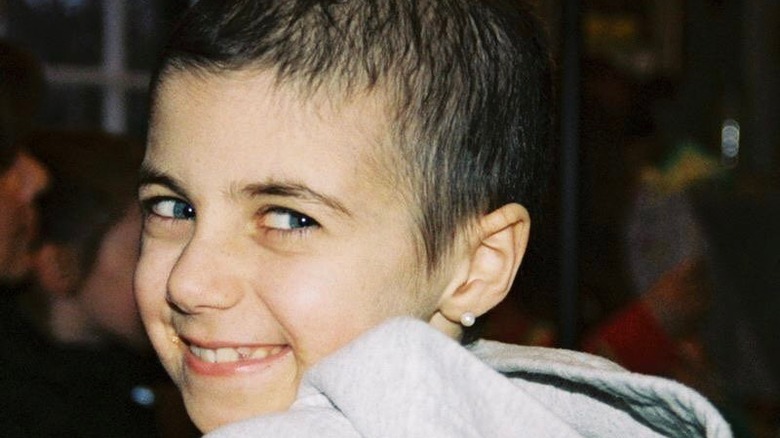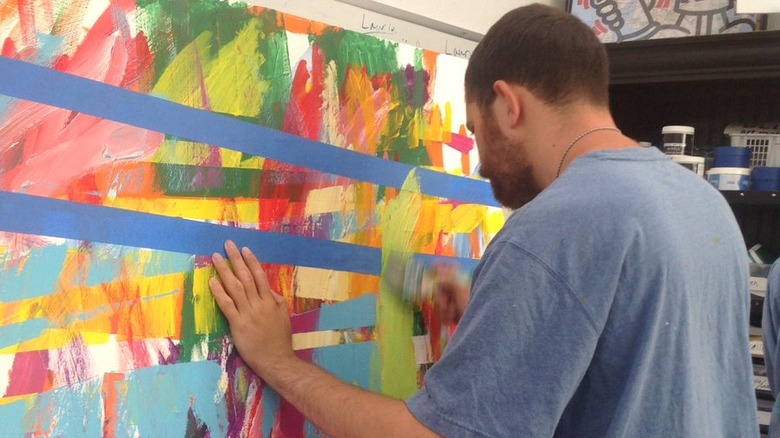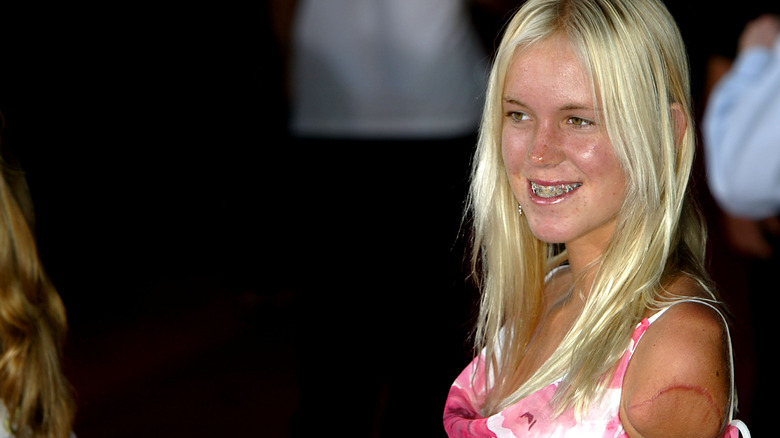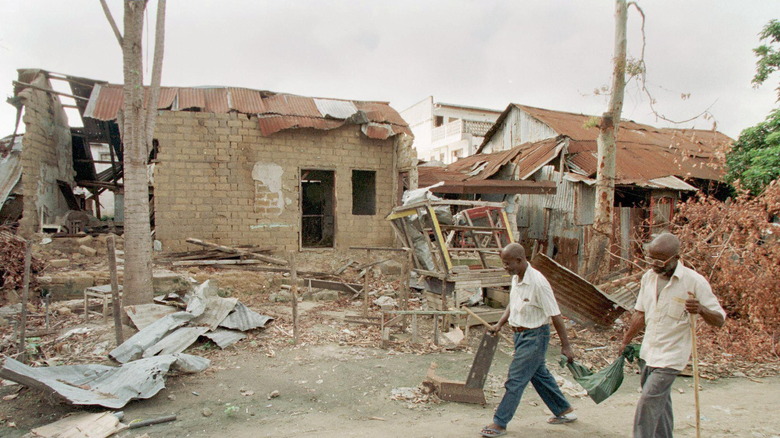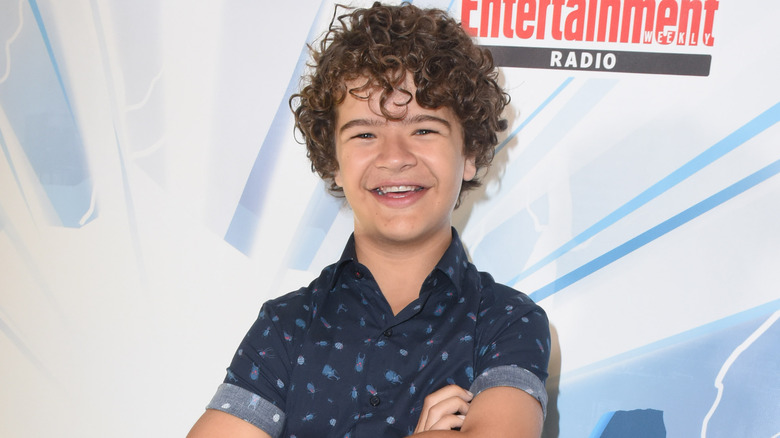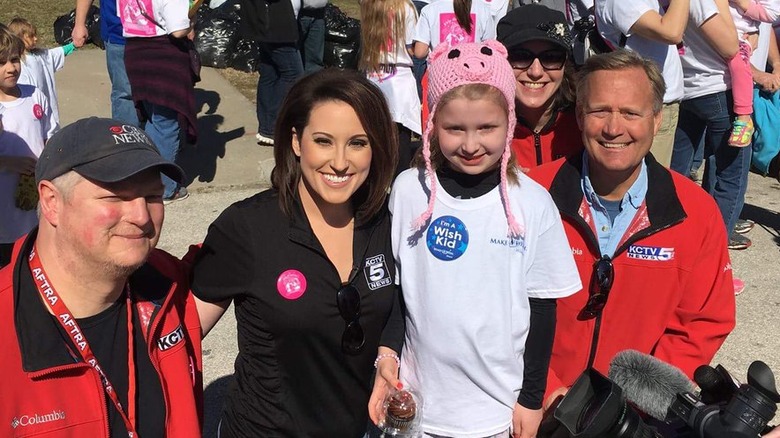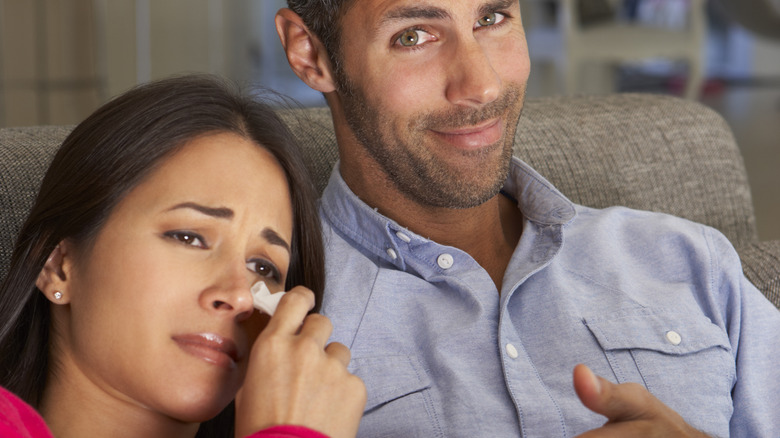These Amazing Kids Refused To Let Any Of Life's Obstacles Get In Their Way
One of my favorite phrases lately has been "Life will teach you many things." I'll admit, it definitely comes in handy when faced with a self-important jerk — but it also helps me remember that, at the end of the day, time is a great equalizer, and that over the course of each person's existence, life will indeed teach us many things. (Although, let the record reflect that I wouldn't object to life teaching me things like, say, how to score free vacations, or how to win the lottery. I'm just saying.)
For some people, this happens later in life. But for others, crucial lessons — such as the importance of determination, grit, compassion, and empathy — come astonishingly early. To learn about kids and teens who achieved extraordinary things while facing massive obstacles, read on. And, pro tip: grab some tissues.
Khadijah Williams
Khadijah Williams was homeless starting at age six. She, her mother, and younger sister lived in shelters for most of her life, and because they changed shelters so frequently, she attended 12 schools in 12 years. When Williams was in third grade, she placed in the 99th percentile on a state exam and was marked as gifted, "a special category that Williams, even at that early age, vowed to keep," according to the Los Angeles Times.
By the time she was a junior, she was determined to stay at one school until graduation — but, because she was staying in a shelter far from her school in Los Angeles, this meant that she had to wake up at 4 a.m. to take the bus to school. Nonetheless, she maintained nearly a 4.0 GPA and was offered a full scholarship to Harvard.
"I knew that education was my ticket out of poverty... I think the most important thing that I did was to seek out help. I signed up for programming and enrichment opportunities for low-income students. I did every extracurricular I possibly could. I studied twice as hard as my peers because I had to," Williams said in an interview. "It was also an opportunity to be the kind of person that my mom believed me to be. She felt that I was special, and I was able to hold on to that as everyone else was telling me that I wasn't."
Williams graduated from Harvard in 2013.
Anthony Robles
Born with only one leg, Anthony Robles was determined to live normally and to excel in his own way. His determination began to emerge at an early age: after being fit for a prosthetic leg when he was three years old, he took it off and hid it behind the furniture. That determination started paying off quickly, and as his brother told ESPN, "he would play basketball with us, football with us. He had one leg, but I always wanted him on my team because he was one of the best."
Robles took up wrestling when he was a freshman in high school, and he spent his first season getting his tush handed to him in every match. According to Deadspin, "at the end of his first season, Robles was last in the city of Mesa, Arizona, an area not known for great wrestling." But, as you can probably guess, Robles was undeterred by this, and he asked the best wrestler on the team to train with him during the summer.
The training was brutal, but Robles improved and began to adjust his technique to fit his body and its differences — and by the end of his sophomore season, he was sixth in the state of Arizona. He was undefeated in his junior and senior years, and he won the national championship title as a senior. Robles went on to wrestle for Arizona State University, and he won the collegiate national championship in 2011.
Alexandra Scott
Diagnosed with neuroblastoma, a pediatric cancer, in 1996, Alexandra Scott accomplished a lot in very little time. She was an infant at the time of her diagnosis, and she spent years undergoing chemotherapy and numerous surgeries. While she was recovering after receiving a stem cell transplant, the four-year-old told her mom she wanted to open a lemonade stand to raise money for pediatric cancer research. "I was a little worried that she would be disappointed, but she didn't really care what my opinion was," Scott's mom Liz said in an interview with ABC's Good Morning America. "She said she was going to go ahead and do it anyway."
That first lemonade stand outside the Scott home in Philadelphia, Pennsylvania, wound up raising $2,000, which Scott gave to the hospital where she was being treated. And with that, a movement was born. As word of Scott's efforts began to spread, more and more people got involved, organizing their own lemonade stands and donating the profits to her cause.
"Alex's Lemonade Stand" wound up raising $1 million before Scott's death in 2008, and her parents established the Alex's Lemonade Stand Foundation (ALSF) to continue raising money for research, treatment, and cures for pediatric cancers. As of 2014, when ALSF celebrated its tenth anniversary, the foundation had raised over $80 million for cancer research. "She amazed me in her life, and I feel like her legacy has continued," Liz Scott said in an interview on NBC's Today.
Jeremy Sicile-Kira
Jeremy Sicile-Kira spent most of his life unable to communicate. Sicile-Kira, who is nonverbal, has a form autism spectrum disorder as well as synesthesia — a perceptual phenomenon where one sensory experience activates other senses as well, leading to experiences like seeing sounds, or seeing colors associated with specific numbers, emotions, and letters.
Determined to graduate from high school, Sicile-Kira took both special education and mainstream classes, used a letter board to communicate, finished high school with a 3.5 GPA, and was able to deliver a commencement speech to his graduating class through voice-assisted technology.
Sicile-Kira now creates paintings based on what he sees as a result of his synesthesia — he told NBC News that his painting is "something I can contribute to society... My gift of synesthesia and painting is one way I frankly can give people pleasure." Sicile-Kira's paintings were featured in a San Diego art show in 2016.
Bethany Hamilton
In 2003, 13-year-old Bethany Hamilton was surfing near her home in Hawaii when she was attacked by a shark — an incident that took her left arm, but not her drive or determination. "I was laying on my board sideways. And then... the shark came up and grabbed a hold of my arm," she told ABC News in 2005. "And then, I was holding onto my board, because I probably didn't want to get pulled under. It was pulling me back and forth, not pulling me underwater... you know how you eat a piece of steak? ... It was kind of like that. And then it let go. Then I looked down... and it was really red, from all the blood in the water."
Her arm was severed just below the shoulder, and by the time she reached the hospital she had lost over 60 percent of her blood. After emergency surgery and a week in the hospital, Hamilton was released — and she was back in the water two weeks later. Determined not to live in fear or give up on love of surfing, she continued competing and, just over a year after the attack, won her first national surfing title. She later started surfing professionally at age 17, and since then has remained a force to be reckoned with.
In 2016, she advanced to the semifinals of the elite World Surf League competition, and she was recently inducted into the Surfer's Hall of Fame. Sharks, consider yourselves warned.
Dominic Kerr
Dominic Kerr was diagnosed with leukemia as a small child and, at age 4, received a visit from the Make-a-Wish Foundation — and upon being granted the wish of his choice, he said that he wanted to provide toys for other kids going through major illnesses. Knowing how much he enjoyed the toys provided by the University of Pittsburgh Medical Center (UPMC) during his treatment, he wanted to go on a shopping spree at a toy store to fill UPMC's toy treasure chest so that other kids could get the same enjoyment out of it that he did.
"Dominic wished not for himself but for other children," regional Make-a-Wish President Judith Stone told Pittsburgh CBS affiliate WDKA. "He had a memory of coming to children's hospital, and one of the highlights was going to the treasure chest." He reportedly almost bought out both a Toys-R-Us and a Wal-Mart, and then returned to UPMC to drop off the goods. Asked why he wanted to use his wish to help others, Kerr replied that he did it "Because I want to see the other kids happy." And that, dear reader, is what I'd call an impressively wise and compassionate four-year-old.
Rachael Ushindi
Growing up in the Democratic Republic of Congo (DRC), Rachael Ushindi's childhood would be hard for most people to fathom. When she was 10 years old, rebels attacked her home during the DRC's civil war, and she and her sisters decided to flee — a decision that ultimately led to their safety, but also set them on a path of tremendous hardship.
With her 14-year-old sister as the official caretaker for Ushindi and her sisters, the girls spent time in numerous refugee camps before eventually joining a resettlement program that brought them to Aurora, Colorado. Even though Ushindi and her sisters were safely away from the instability and violence in their home country, adjusting to her new environment posed its own massive challenges. As anyone who's ever changed schools knows, trying to make friends and adjust to a new school is hard enough as it is. Now imagine doing it when you don't speak the language, don't understand the culture, and just endured the trauma of fleeing a war zone. (Oy. Is anyone besides me terrified by the very idea?)
Thankfully, Ushindi had lots of support: her adoptive parents, as well as her new school's teachers, counselors, and staff were there to support her dogged determination to succeed. "I struggled so hard my first year of high school," Ushindi said, "but my teachers and my parents helped me." Ushindi graduated from high school in 2015, plans to study social work, and hopes to eventually work with children.
Gaten Matarazzo
Anyone who has watched the impressively popular Netflix show Stranger Things will recognize Gaten Matarazzo, who plays the role of lovable, lisping Dustin. Gaten has cleidocranial dysplasia (CCD), a condition which affects the development of the teeth and bones. "It affects your facial growth, your skull growth; it affects your teeth, so that's why I don't have any," he said while on The Jonathan Ross Show.
While he uses prosthetic teeth and has a milder case of CCD than what many other CCD patients have, he told CBS News that he thought it actually helped him get the part in Stranger Things. "What I really think got me the part was how I showed them that I had CCD. I think they thought that the condition gave Dustin a purpose," he said. "And I think we could have a deeper connection with the audience and with the cast members because of it... Dustin is very positive towards [the condition] and I think having it gave the writers a unique look into the character."
Matarazzo has said he wants to be open about the condition, and to be an advocate for not hiding his differences. "I feel like putting it into the show is really raising awareness for it," he said in his Jonathan Ross Show interview. "I just want to raise awareness for it and let people know that it's not something they should be afraid of showing." Amen to that!
Amelia Meyer
Eight-year-old Amelia Meyer was receiving treatment for brain cancer when the Make-a-Wish Foundation offered to grant Amelia's greatest wish, which she said was to "take care of the world."
Working with volunteers from Make a Wish, they decided to arrange a day for her to take care of the world by cleaning up three local parks. Because she often went on walks with her grandmother during her treatment, Meyer noticed that many local parks had a trash problem — and so, on her special day, she decided that she wanted to give back by picking up that trash. "It doesn't look nice and another reason is because it can stay dirty and it can get animals sick," she explained in an interview with local CBS affiliate WTVR.
Her day of cleaning up the parks was — understandably — enormously inspiring, and it galvanized an impressive array of support: in addition to hundreds of volunteers who showed up to help, Helzberg Diamonds, the Kansas City Parks and Recreation Department, the Kansas City Fire Department, and the Kansas City Police Department all joined in. "I thought there was just going to be some people, not this much," Meyer told WTVR. In fact, people were so inspired by Amelia that Kansas City Mayor Sly James named February 27, 2016 "Amelia Meyer's Take Care Of The World Day," and people across the U.S. used the hashtag #AmeliasWish to post pictures of themselves cleaning up their local parks. That's one amazing ripple effect!
An impressive, and inspiring, group of young people
These folks are incredibly impressive: I never fail to be blown away by the altruism of kids like Dominic, Alex, and Amelia, or the sheer persistence, bravery, and grit of kids like Khadijah, Anthony, Bethany, and Rachael. May we all aspire to embody more of those traits in our own lives! And now, if you'll excuse me, writing this made me get all verklempt, so I have a pile of Kleenex that I need to throw away.
